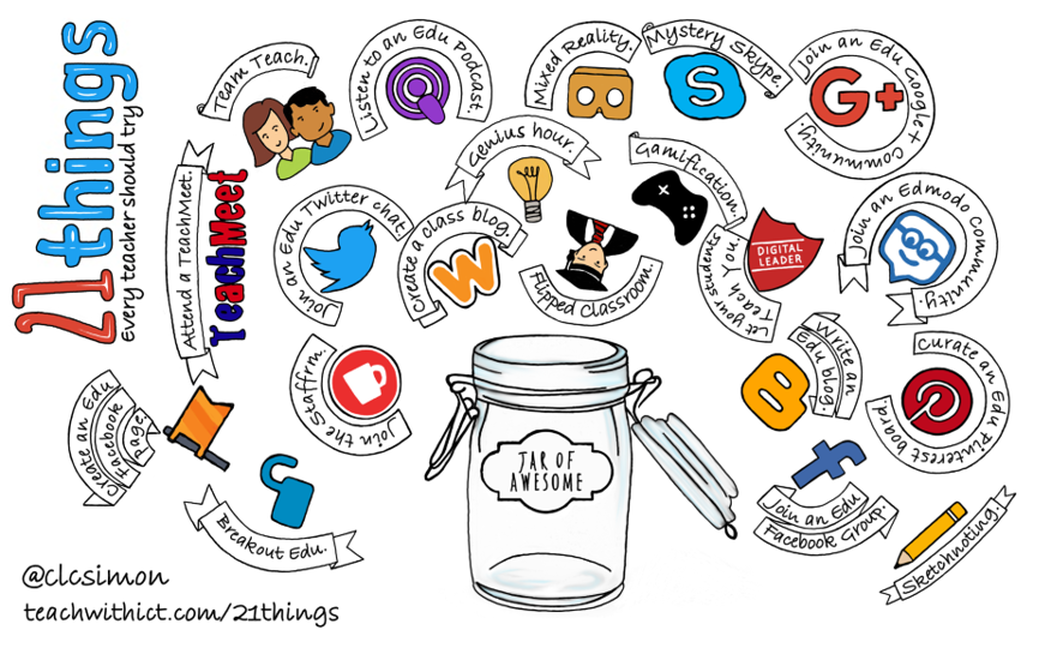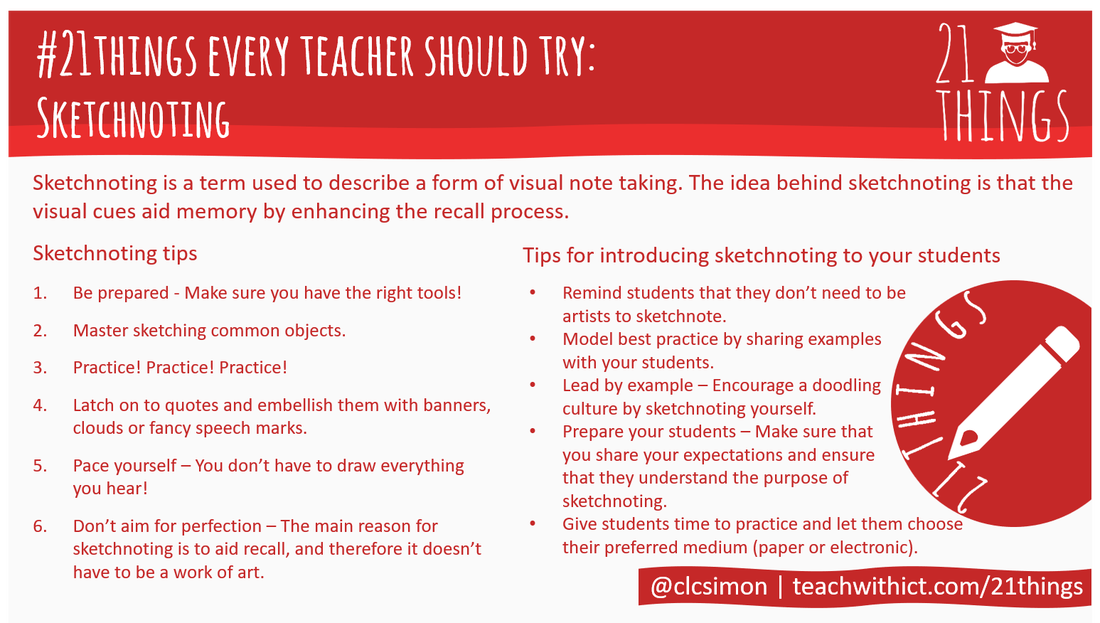21 things every teacher should try:
Sketchnoting
Reading Time: 2 minutes
Sketchnoting is a term used to describe a form of visual note taking or, put more succinctly, purposeful doodling! Through a combination of pictures and embellishments, sketchnoting is primarily used to record key points whilst listening to a keynote or reading through text but can also be used to express ideas, concepts, and important thoughts or even used as a revision aid. The idea behind sketchnoting is that the visual cues aid memory by enhancing the recall process.
Sketchnoting has been around for a while and is commonly used at conferences and keynotes. However, thanks to its rise in popularity, sketchnoting is now starting to find its way into the classroom.
Sketchnoting has been around for a while and is commonly used at conferences and keynotes. However, thanks to its rise in popularity, sketchnoting is now starting to find its way into the classroom.
"Sketchnoting is a great way to empower students and allow them to synthesize information visually" - Katherine Goyette @kat_goyette
Getting started
You don’t need to be an artist to be able to sketchnote and, with these few simple tips, you’ll soon be on your way to becoming a sketchnoting master!
Sketchnoting tips
Be prepared – As with any job, make sure you have the right tools! For the traditionalist, a pen, paper, some coloured pencils and a pencil sharpener are essential. For the tech savvy, a charger for your device and spare battery for your stylus is always beneficial!
- Master sketching common objects – So as not to get flustered during an important point, try mastering common objects such as containers, place-holders and connectors! I find that Pinterest is a great place for inspiration!
- Practice! Practice! Practice – They say that practice makes perfect and sketchnoting is no different. Try practicing at home, perhaps whilst watching a TED-Ed talk on YouTube or whilst reading a book.
- Latch on to quotes – Quotes are often used in keynotes to solidify/re-enforce an argument or statement. Quotes are best written down in their entirety so as not to lose the original meaning but can be embellished with banners, clouds or fancy speech marks.
- Pace yourself – You don’t have to draw everything you hear!
- Don’t aim for perfection - The main reason for sketchnoting is to aid recall, and therefore it doesn’t have to be a work of art.
"I've loved being able to bring #sketchnoting into my classroom to help students better understand content" - Catherine Tang @EduScribblings
Tips for introducing sketchnoting to your students
- Remind students that they don’t need to be artists to sketchnote.
- Model best practice by sharing examples with your students.
- Lead by example. Encourage a doodling culture by sketchnoting yourself.
- Prepare your students. This concept will be as new to them as it is to you! Make sure that you share your expectations with the students and ensure that they understand the purpose of sketchnoting.
- Give students time to practice and let them choose their preferred medium (paper or electronic).
- Allow time for reflection. As with any new activity, it’s important to give the students time to reflect on what they liked/disliked, what they found most challenging and what they could do to improve next time.
Useful links:
- http://mmeduckworth.blogspot.co.uk/2014/12/sketchnoting-or-visual-note-taking.html - Sylvia Duckworth’s Sketchnote/ Visual Notetaking Blog Post for Beginners
- http://www.thegraphicrecorder.com/an-educators-guide-to-sketchnoting/ - An educator’s guide to sketchnoting.
- http://www.next.cc/journey/tools/visual-note-taking - Visual note taking lessons.
- https://www.pinterest.co.uk/clc_simon/sketchnoting-101/ - Sketchnoting inspiration.
- https://www.youtube.com/watch?v=7TXEZ4tP06c - Why people believe they can’t draw - and how to prove they can | Graham Shaw | TEDxHull.
- https://www.flickr.com/photos/rockourworld/12576243464/ - Sketchnoting tips




